Buy 1000 Blog Comments Backlinks for Any Website
₹ 2,000.00 Original price was: ₹ 2,000.00.₹ 999.00Current price is: ₹ 999.00.
Have you ever left a comment on a blog?
How do you feel when the author replies?
As we’re all ushered into this age of social media, each and every one of us is looking for ways to form stronger relationships with our audience, especially with current and potential customers.
100% Genuine & Authentic Services
13 Years Old Digital Marketing Agency Since 2012
10,000+ Happy Customers Since 2012
30 Days 100% Money Back Guarantee. No Questions Asked.
24x7 WhatsApp Support Customer Care
100% Safe Payments via UPI
1000+ Combined Positive Reviews on Internet
Great for increasing your SERP (search engine results page) to get better position in search page results !
You can provide unlimited websites and unlimited keywords, great to create link pyramid, use this service as tier2 for your backlinks.
Delivery in max 5 days !
Have you ever left a comment on a blog?
How do you feel when the author replies?
As we’re all ushered into this age of social media, each and every one of us is looking for ways to form stronger relationships with our audience, especially with current and potential customers.
There are many ways to discuss how to cultivate and build relationships. I want to focus on blog comments—an often poorly understood and very underutilized tactic by individuals and businesses.
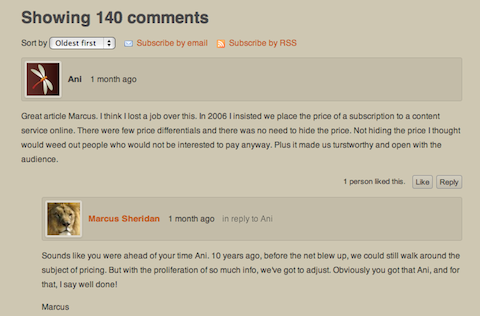
Why Blog Comments?
Over the last 3 years since I started blogging for my two businesses (one company does swimming pools and the other is a sales/marketing company), I’ve personally replied to over 8000 comments on my two blogs.
I don’t give you this number with any intent to brag, but rather to set the stage for a topic that is near and dear to me, and one that I see businesses and bloggers falling short on everywhere, simply because they’re missing a few of these important habits.
This article isn’t about “How to get more blog comments,” but rather how to cultivate better relationships through comments. Notwithstanding, the two do overlap, as you’ll see in the following list.
Finally, you’re going to find that some of the components of this list are nothing more than common sense. But as so many know, common sense, especially in this new culture of social media, can at times be rather uncommon, and therefore needs to be mentioned.
Here’s how to cultivate relationships with blog comments.
#1: Write in a Personal Voice
You can probably tell from just the first few paragraphs of this post that I like to write in a personal tone. And if you’re looking to truly cultivate relationships with the stuff you write, a personal feel will make a HUGE difference.
When done properly, writing in a personal tone and style will immediately help readers feel more comfortable with an author/company and this comfort level naturally lends itself to readers considering leaving their thoughts in the comments section or via email in a direct reply.
So whether you’re writing about swimming pools, insurance, equipment, services, etc.—strive for a personal voice.
#2: Invite Reader Response by Asking Questions
Studies have shown that less than 1% of readers will leave comments on a blog, but I can assure you this number would be better if writers would simply guide the reader in terms of questions at the end of posts.
No matter what your business is, the final paragraph of your blog article is the perfect spot to ask specific questions regarding the topic you’ve just discussed.
Ask readers their thoughts and whether they agree or disagree. Invite them to share further examples that would help other readers. It’s truly amazing the difference this will make if it becomes a habit with everything you write.
PR 20/20 does a very nice job of asking questions at the end of each post in their blog.
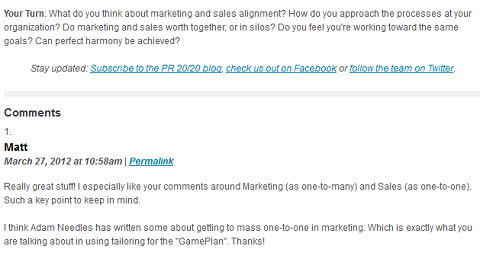
#3: Don’t be a Know-it-All
Have you ever read a blog article where the author seemed so snooty or conceited that you were left with a feeling of disdain? Believe it or not, this happens a lot with bloggers and businesses, simply because they confuse arrogance with confidence and authority, thus turning off their readers.
So although it’s a good idea to be an authority in your industry, be careful not to be too over-the-top in your efforts to establish your voice, as this will greatly hinder anyone’s desire to continue the conversation with you going forward, especially in a blog’s comment section.
#4: Admit You May be Wrong
This is an especially powerful technique for inviting discussion, especially if what you’re writing is an opinion piece. Social media expert Chris Brogan has used this technique successfully.
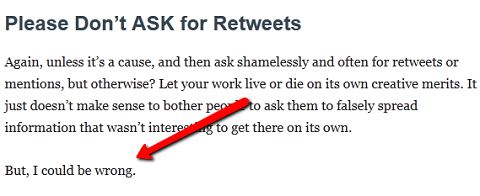
#5: Utilize an Author Bio and Photo
Did you see the author bio box at the end of this post? Other than the fact that Social Media Examiner authors benefit from this little box from a branding and traffic perspective, it also is a tactical way by which readers can get a personal feel for the article’s author, and therefore be more inclined to leave a comment, share the post, etc.
This feature is especially valuable for multi-author blogs.

#6: Say a Simple “Hello”
If you see a friend (we’ll call her Nancy in this example) on the street or in the grocery store, what’s the first thing you always do? Chances are, you likely start off with something like, “Oh, hey, Nancy!” or “Hi, Nancy.” A simple salutation is something we do in just about every society, and it’s a good practice to use when responding to blog comments as well.
Just a little “hello” goes a long way in building relationships with readers, and believe it or not, it’s a practice not seen with many blogs and businesses.

#7: Use Readers’ Names
If you’ve ever read the classic book How to Win Friends and Influence People by Dale Carnegie, it’s likely that you remember his thoughts on the power of using names. In fact, in the book he states:
Remember that a person’s name is to that person the sweetest and most important sound in any language.
Such a simple yet profound statement by Carnegie is one that absolutely applies to building relationships with blog comments.
#8: Show Empathy
One of the greatest human needs we all share is wanting to be understood by others. Often, when someone is leaving a comment on your blog, they’re doing it because they want to share about their problems/solutions, failures/triumphs, etc.
This being said, if someone discusses their struggles in their blog comment, always reply with empathy. Recognize what they’ve just told you. This alone will show them you care, and be a powerful relationship-builder.
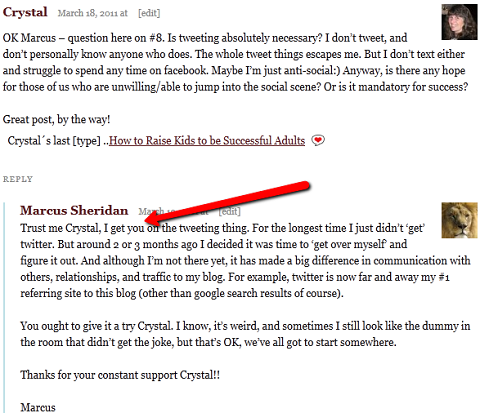
#9: Ask Further Questions
As with #8, let’s say someone experiencing a problem discusses it in a comment. Other than simply responding with a potential answer, you may want to consider asking more questions to better identify what is happening with the individual so that the solution you come up with is the best one.
Also, by asking these questions, the individual (and other readers) will see how much you care and want to assist in solving the problems of another.
Social Video Summit (Online Training)
 Wish you had an engaged social following that turned into customers? Want to succeed with social video, but something’s stopping you? Get ready to be coached by 12 of the world’s best social video marketing pros for an entire week. Each expert is a dedicated specialist. They live and breathe social video, delivering results for their clients every day. And they’ll share their proven strategies with you. You’ll learn from their mistakes, experiments, and successes. Imagine putting their wisdom to work immediately in your business. This is a live online training event from your friends at Social Media Examiner.
Wish you had an engaged social following that turned into customers? Want to succeed with social video, but something’s stopping you? Get ready to be coached by 12 of the world’s best social video marketing pros for an entire week. Each expert is a dedicated specialist. They live and breathe social video, delivering results for their clients every day. And they’ll share their proven strategies with you. You’ll learn from their mistakes, experiments, and successes. Imagine putting their wisdom to work immediately in your business. This is a live online training event from your friends at Social Media Examiner.
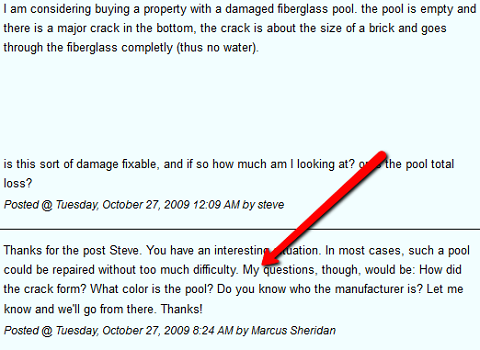
#10: Invite Other Readers to Share Their Solutions
It’s one thing for you and those in your company to answer all of the questions and needs of those who comment on your blog, but it’s another to invite others in your community to step up and give value to readers.
When you have a community of readers who help each other find the answers they’re looking for, this not only takes the pressure off of you to be the “end-all,” but it will also develop a sense of team and community.
Remember this concept of help from the community is not typically an “assumed” thing, which means you need to make it known to readers they’re always invited to leave replies to other folks when they feel they can add value to the discussion.
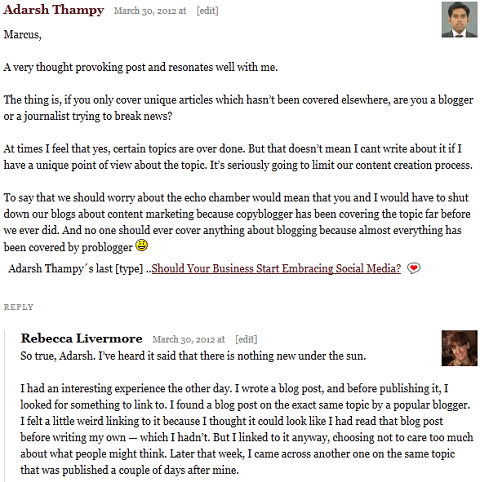
#11: Respond with Personal Emails
With most blogging platforms, a person who leaves a comment must leave their email in order to do so, which is why it’s a great idea at times to personally reply to readers not just in the comment section, but via direct email as well.
I’ve sent personal emails to hundreds of readers of my blog over the last few years, and almost always they’re shocked I took the time to do so. As you might imagine, this is a powerful relationship-building tool.
#12: Be Specific with Your Praise
If a blog reader leaves a thoughtful comment on your blog with excellent points, take the time to point out what about the comment impressed you, plus your additional thoughts. This will show the person that you truly read and appreciated the comment, and in many ways will feel like a “reward” of sorts for their efforts.
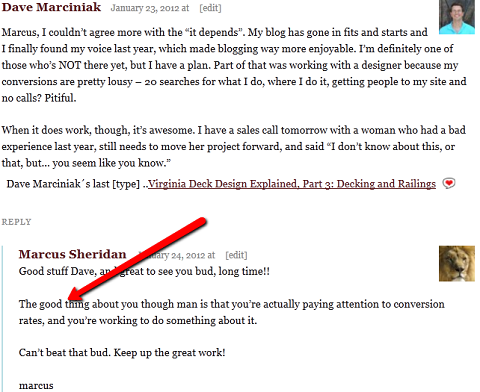
#13: Recognize Returning Commenters
Like the theme from the famous TV show Cheers, “Sometimes you want to go where everybody knows your name.” Now granted, that statement was referring to a bar, but the same feeling can be created within a blog’s community and in many ways starts with your ability to recognize readers “as they come through the door”.
So if you see someone returning to your blog, make sure they realize you notice their return, and the fact that you appreciate the visit.

#14: Use a Plugin/Platform that Ensures all Replies are Read
Because we’re all getting a little tired of our in-boxes being so full these days, there’s a good chance that just because someone leaves a comment on your blog that they’re not going to subscribe to all comments on that post, for fear of “inbox inundation.” This is why it’s critical that along with giving readers the option to subscribe to all comments in the post, you add a plugin that ensures they’ll get your reply emailed to them directly.
For all of you using WordPress and their commenting platform, easily the best plugin for this in my opinion is ReplyMe, as it automatically emails any replies to a commenter directly. This is not only a valuable asset in stimulating discussion, it also shows all commenters that you took the time to reply to their remarks.
There are other blog commenting platforms that help with your ability to communicate and converse with your readers—with Disqus (used here at Social Media Examiner) and Livefyre (used at Spin Sucks) being two of the most popular.

#15: Thank Readers for Their Support
Out of the 8000+ replies I’ve made to individuals, I’d venture to say I’ve included some type of thank-you in at least 7000 of them. The reason for this is simple—you want commenters to feel appreciated. Although this does add a little bit of time to each reply, it’s well worth it.
#16: Sign Your Name
This little technique is surprisingly practiced by few bloggers and businesses, but it certainly makes a difference. Just as you would in a letter or an email, it’s a great idea to sign your name to every reply you make to a commenter on your blog. Not only will this allow them to know who is talking, it will also have more of a personal feel and touch as well.

#17: Refer to Comments in Future Posts
As most bloggers know, a healthy comment section can be a breeding ground for future blog post subjects, especially when readers are expressing their problems, issues, questions, success stories, etc.
When great thoughts and questions are left in the comments section, not only should you turn these into subjects for future posts, but also mention and give credit to the reader/commenter who inspired the article.
Done the right way, this is a powerful method to show your community you value their input and are looking out for their needs.
#18: Don’t be a Jerk if Someone Disagrees with You
I recently was commenting on another blog and after I disagreed with what the author of the post had said, the person’s response to my comment was, “You’re just wrong.” Yep, that was the response. And as you might imagine, I didn’t leave that blog post with a stronger appreciation for that particular blog and its author.
Always treat those who disagree with you or your blog with respect. Assuming they do it with class, any debate can be very healthy for the blog, the brand and the community. If the person goes over the top and says something blatantly false or offensive, keep in mind at that point it’s absolutely fine to delete the comment, as there is no rule that states all comments MUST be allowed to stay in the comment section.
#19: Respond!
Although I probably should have made this the first item on the list, I wanted to finish off with it because everything we’ve talked about in this article starts and stops with a blogger’s/company’s willingness to take the time to respond to commenters.
Now granted, sometimes this may not be possible due to time and resource constraints (especially in the rare occasion that you get dozens, even hundreds, of comments per post), but if your desire is to cultivate relationships through your blog, a reply to thoughtful commenters and readers is an extremely important element.
Now It’s Your Turn
Even though I’ve come up with 19 ways to cultivate relationships through blog comments in this post, I know there are many more out there that you are likely using as well. So please don’t hesitate to add your suggestions to the list in the comments section below.
What do you think? Are there any items in the list that you don’t agree with, or have a unique experience with? Tell us about it. We’d love to hear more from you! Leave your questions and comments in the box below.
Reviews
There are no reviews yet.
Be the first to review “Buy 1000 Blog Comments Backlinks for Any Website”
You must be logged in to post a review.




Blog Comments
Buy 18 SEO blog comments backlinks from pr2 to pr5 websites
₹ 2,500.00Original price was: ₹ 2,500.00.₹ 999.00Current price is: ₹ 999.00.